Battle of Jutland: Belfast commemorates 1500 Irish sailors killed in World War One
- Published
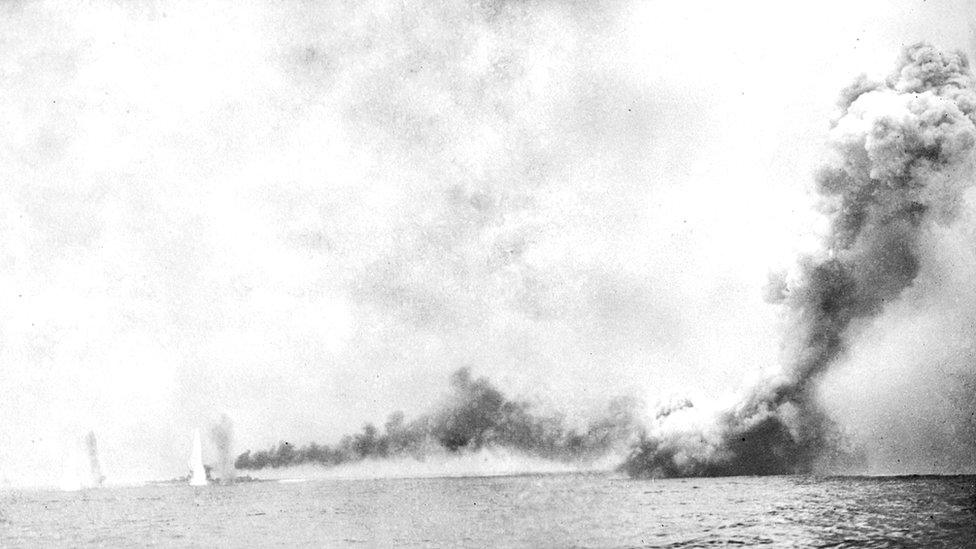
Over 350 Irishmen died during the Battle of Jutland
On 18 October 1914, the focus of British Naval power in World War One became a deep water lough in a remote corner of northern County Donegal.
The emergence of the U-Boat as a German weapon forced the Royal Navy to move its grand fleet from its northern home at Scapa Flow in Scotland.
They went to one of the most peaceful spots in the British Isles - Lough Swilly.
Battle of Jutland: Belfast commemorates 1500 Irish sailors killed in World War One
At that time, it was pre-partition Ireland.
Forty fighting ships including battleships, cruisers and destroyers sailed into the lough.
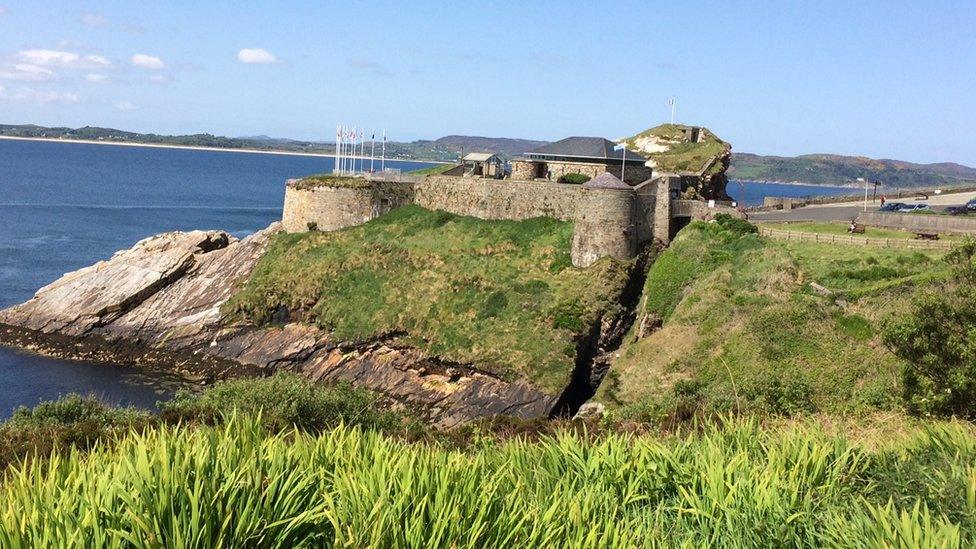
Fort Dunree on the Inishowen peninsula was one of the forts used to guard Lough Swilly
They were guarded on either side of its mouth by specially built forts with long-range guns, including Fort Dunree on the Inishowen peninsula.
The fleet commander, Admiral Jellicoe, saw the base as one that was safe from U-Boat attack.
But, in the years to come, the German attack would take its toll in the cold waters off Donegal, sinking HMS Audacious and the SS Laurentic.
Eventually, Jellicoe knew he would have to return to the North Sea to face the Kaiser's fleet - an appointment met on 31 May 1916 off Denmark, in what became known as the Battle of Jutland.
Although it was far from Ireland's shores, 358 Irishmen serving as volunteer sailors died in that battle as the two fleets traded shells for dominance of the seas.
Later on Tuesday, their sacrifice, the role of Ireland and the 10,000 Irishmen who served in the Royal Navy in WW1 will be marked as part of the Battle of Jutland commemorations.
The commemorations will take place in a special cross-border event in Belfast onboard a ship that took part in the battle.
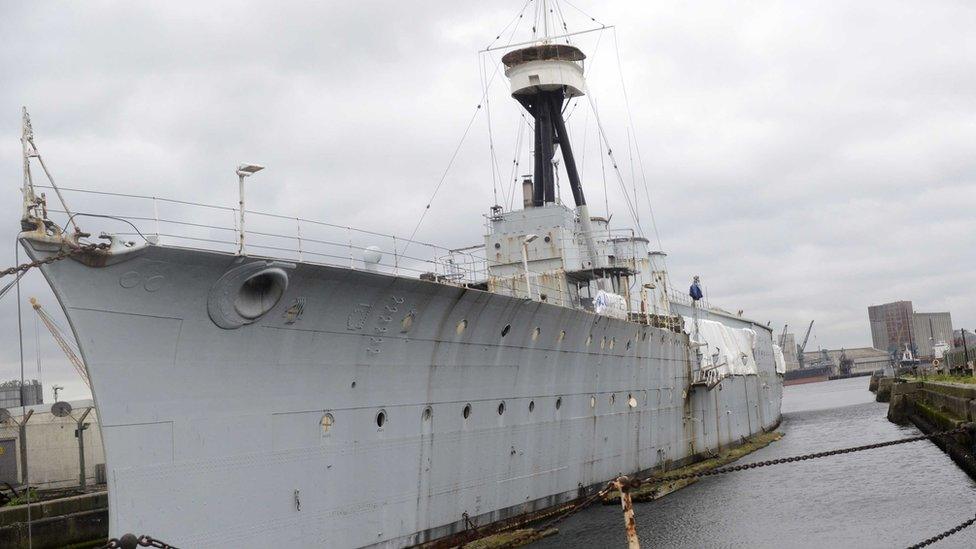
HMS Caroline will host the commemoration event of the Battle of Jutland
HMS Caroline, launched in 1914, is the venue for a gathering of sailors from the present day Royal Navy and the Republic of Ireland's Naval Service, relatives of Irishmen who served at sea in the war, as well as representatives of the UK and Irish governments.
The 200 invited guests will hear tribute speeches as well as readings from letters sent from the sailors to their families back in Ireland.
Among them will be Marie McCarthy, whose grandfather, Daniel Fitzgerald from Cork, was a stoker on HMS Tiger.
He recalled hearing horrific sounds and sights during the sinking of the Queen Mary at Jutland.
It sank with the entire crew of more than 1,100 on board, lost to the deep.
Also remembered will be those killed on HMS Hawke, which was primarily crewed by Irishman, and that was sunk by a U-Boat with the loss of 524 men.
Among them was leading stoker Joyce Power, who left young twins and a pregnant wife in Ballymena.
His daughter, Margaret Hawke Power, was named after the ship on which he was killed.
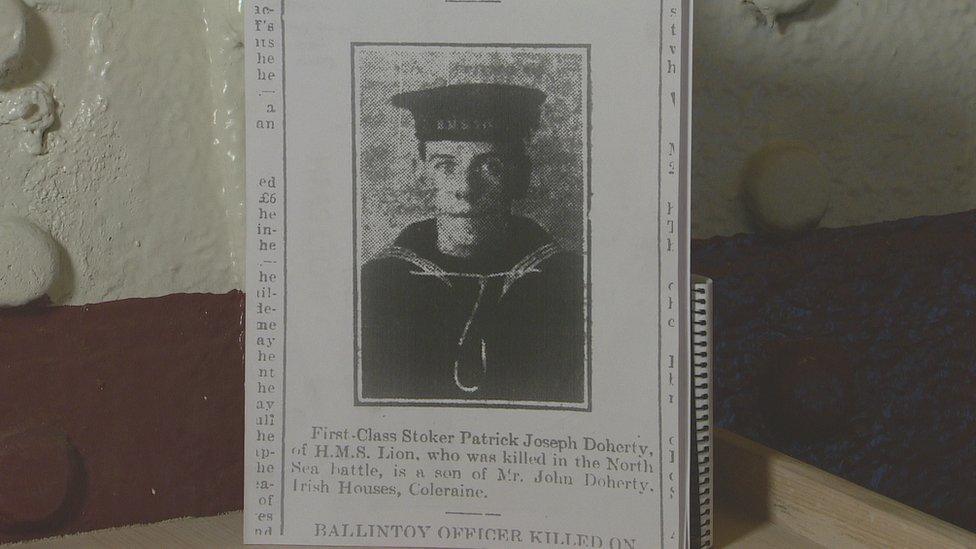
Patrick Joseph Doherty was killed at the Battle of Jutland on HMS Lion
One of the few survivors recalled: "The crew for the most part were Irishmen, the reason being that at the outbreak of war the Hawke, which was one of the oldest ships of the British Navy, was stationed at Queenstown.
"There were only around 24 active servicemen on board, the remainder being fleet reservists."
Another relative who'll be at the commemoration event to mark a family sacrifice is Mark Doherty from Belfast, whose great uncle died at Jutland.
Patrick Joseph Doherty was from a rural area near Coleraine, County Londonderry.

Flags at Fort Dunree on Lough Swilly, one of the Royal Navy's key coastal fortifications during WW1
He was the ninth of 11 children and volunteered for the navy in 1915, dying just 18 months later on HMS Lion.
Mark said his great uncle's role below decks was unbelievably tough.
"He was a stoker, it was an extremely dirty environment and removed from what was on deck and going on outside. It was a very gruelling experience.
"This ship carried 3,500 tons of coal and that all had to be shifted.
"On that day, the fleet he was part of approached the Germans at speed. His role was to shovel coal as fast as possible to help the speed and they then engaged in battle," said Mark.
"Patrick's ship was one of the first to encounter the Germans and the engagement was ferocious.
"HMS Queen Mary was directly in front of the Lion and it was hit , blew up and sank within view of Lion.
"Patrick's ship was targeted then and there is a picture of the Queen Mary going down whilst great plumes of water can be seen around HMS Lion caused by the German shells.
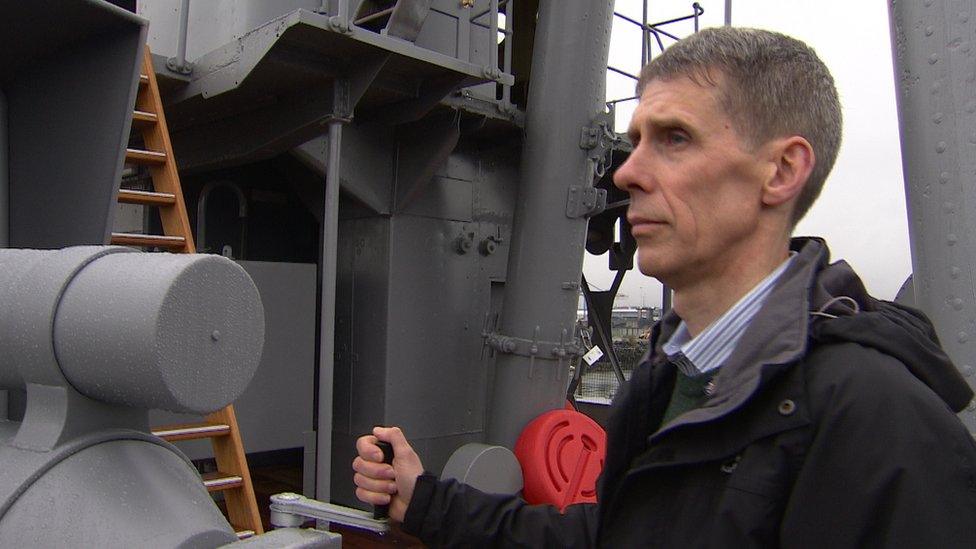
Mark Doherty said his great uncle's role below decks was unbelievably tough.
"It received a number of direct hits and was only saved from sinking when a young seaman deliberately flooded an area which was on fire killing himself and several others as a way of saving the ship.
"I can only speculate that during that exchange it was one of those shells that killed my great uncle," said Mark, who has spent time researching the battle since hearing of his family involvement.
In all, 99 men died on HMS Lion and 51 others were injured, but the vessel stayed afloat to fight again.
Like the others, Patrick Joseph Doherty was buried at sea, but his name is marked on a number of memorials including the war memorial in Coleraine.
As the Navy marks its role in the Great War on land and at sea, the long empty major British naval installations at Lough Swilly in County Donegal and County Cork in the south-west of Ireland stand as silent reminders to those who left the island under the Royal Naval Ensign never to return, having lost their lives in that often forgotten battleground of the first world war - the sea.
There will be a live stream of the ceremony on the BBC News NI website from 12:20 BST on Tuesday.
- Published31 May 2016
